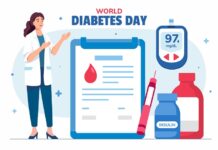A new study from the WATER III trial reveals that Aquablation, a high-pressure water jet therapy, can offer better preservation of ejaculatory function compared to traditional laser surgery in men with Benign Prostatic Hyperplasia (BPH). The trial, presented at the 2025 European Association of Urology (EAU) Congress in Madrid, suggests that Aquablation could be an effective and accessible alternative for men with larger prostates, potentially reducing waiting times for treatments.
Comparing Aquablation and Laser Surgery for BPH
The trial, which involved 202 men with large prostates (ranging from 80 to 180 mL), compared Aquablation with laser surgery techniques such as Holmium laser prostate surgery (HoLEP) and Thulium laser enucleation of the prostate (ThuLEP). The study focused on evaluating retrograde ejaculation, urinary incontinence, and symptom severity, using the International Prostate Symptom Score over a three-month follow-up period.
Key Findings: Ejaculation and Incontinence
As reported by news-medical.net, the study found that retrograde ejaculation, a common side effect of BPH surgery, was significantly less frequent in the Aquablation group. Only 15% of men in the Aquablation group experienced retrograde ejaculation, compared to 77% in the laser surgery group. Furthermore, urinary incontinence was reported in 9% of Aquablation patients, compared to 20% in the laser surgery group. Both groups showed similar results in short-term symptom improvement and adverse events.
Potential for Wider Accessibility and Better Outcomes
Lead researcher Professor Manuel Ritter, Head of Urology at University Hospital Bonn, noted that Aquablation could be a more accessible treatment for men with larger prostates due to its less steep learning curve for surgeons compared to laser surgery. The procedure, which uses robotic guidance and ultrasound imaging, also demonstrates a promising ability to preserve sexual function—a major concern for many men undergoing BPH treatments.
Long-Term Research and Future Directions
While the findings are promising, Professor Cosimo De Nunzio from Sapienza University of Rome pointed out the short follow-up period of the study. He emphasized the need for longer-term research, particularly in patients with chronic urinary retention or those who require urethral catheters. Additionally, future studies should assess other important metrics, such as prostate-specific antigen (PSA) levels and improved urine flow rates.
Conclusion
The WATER III trial demonstrates that Aquablation is a viable, effective option for treating BPH in men with large prostates. By offering benefits like better preservation of ejaculatory function, Aquablation could become a preferred choice for men who are concerned about the impact of traditional surgery on their sexual health. Further studies will be crucial to confirm its long-term benefits and suitability for a wider range of patients.























